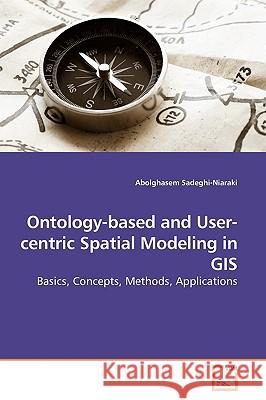Ontology-based and User-centric Spatial Modeling in GIS » książka
Ontology-based and User-centric Spatial Modeling in GIS
ISBN-13: 9783639186369 / Angielski / Miękka / 2009 / 148 str.
This book addresses an ontology-based architecture to design a user-centric (personalized) ontology- based cost model for route finding analysis using a Multi-Criteria Decision Making (MCDM) technique in a Geographic Information System (GIS). A cost model is an essential element of the route finding analysis in GIS. User-centric model provides an outcome based on the user's preference. There is some dissatisfaction regarding existing route finding architectures and their cost models which are based on a one-dimensional and fixed criterion such as distance.With this in mind, the objectives of this book are to develop an ontology-based architecture and a user-centric cost model for route finding analysis using MCDM-Analytic Network Process (ANP) technique.This architecture is completely flexible, dynamic, reusable, sharable and interoperable. The cost model employs several additional user-centric quantitative and qualitative criteria using an ontology concept.This architecture includes four components, the user-centric ontology-based cost model, the ontology-based route finding analysis, geospatial component, and the data repository component.
This book addresses an ontology-based architecture to design a user-centric (personalized) ontology- based cost model for route finding analysis using a Multi-Criteria Decision Making (MCDM) technique in a Geographic Information System (GIS). A cost model is an essential element of the route finding analysis in GIS. User-centric model provides an outcome based on the users preference. There is some dissatisfaction regarding existing route finding architectures and their cost models which are based on a one-dimensional and fixed criterion such as distance.With this in mind, the objectives of this book are to develop an ontology-based architecture and a user-centric cost model for route finding analysis using MCDM-Analytic Network Process (ANP) technique.This architecture is completely flexible, dynamic, reusable, sharable and interoperable. The cost model employs several additional user-centric quantitative and qualitative criteria using an ontology concept.This architecture includes four components,the user-centric ontology-based cost model,the ontology-based route finding analysis, geospatial component,and the data repository component.











